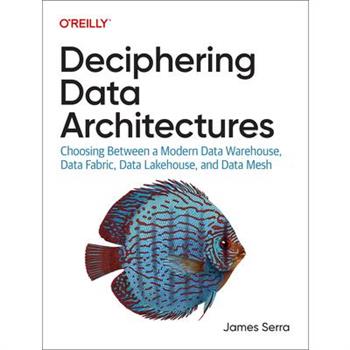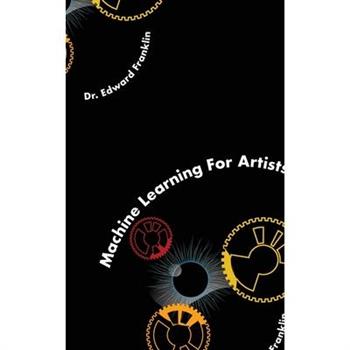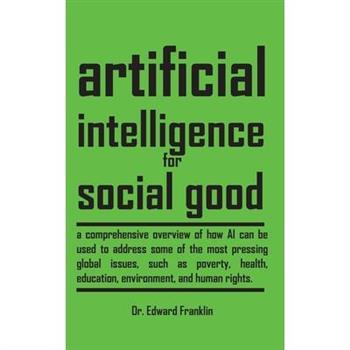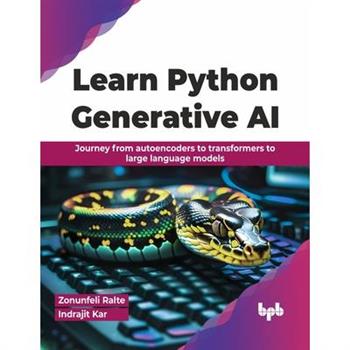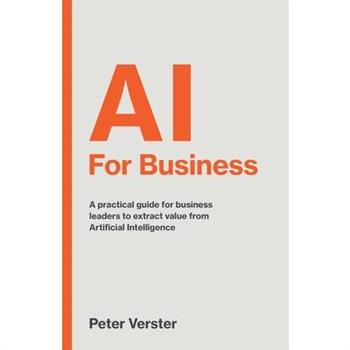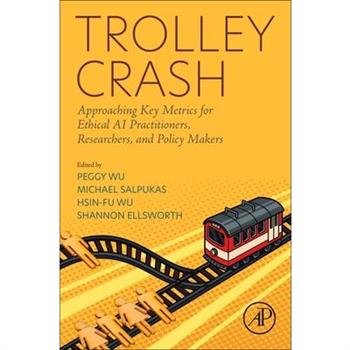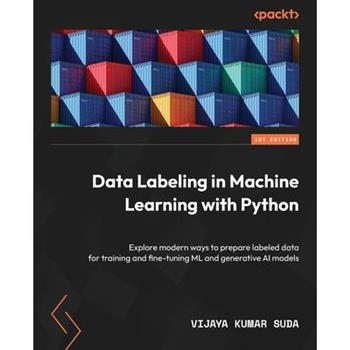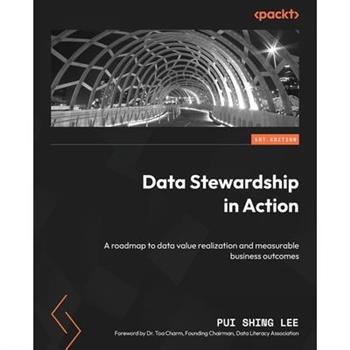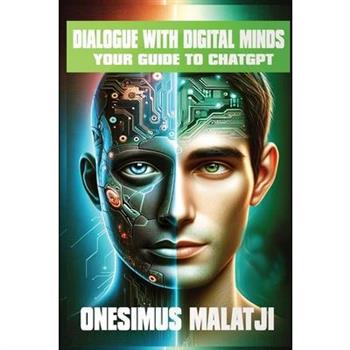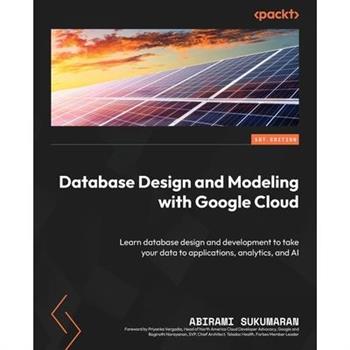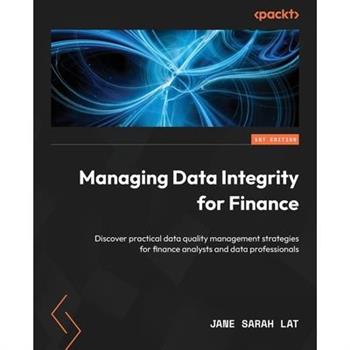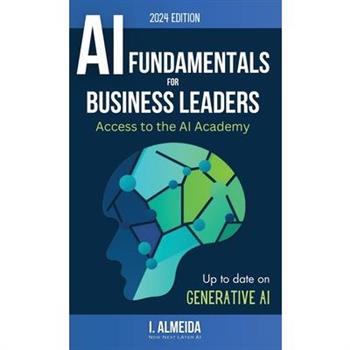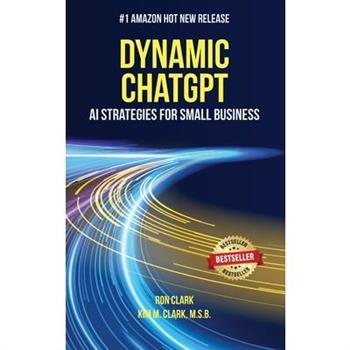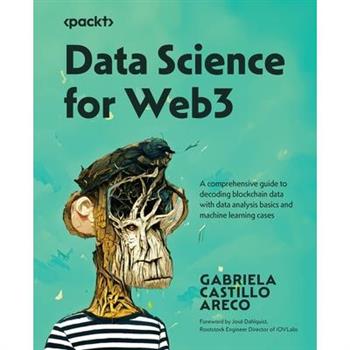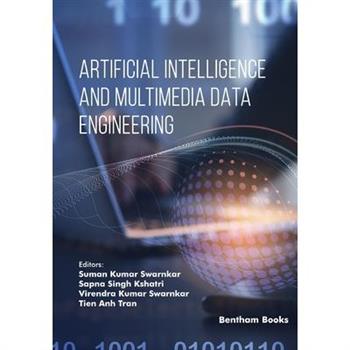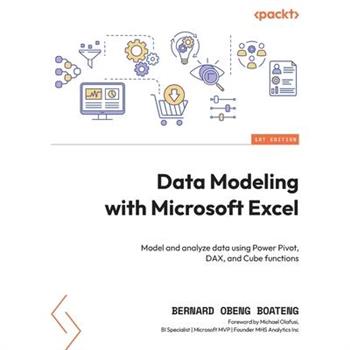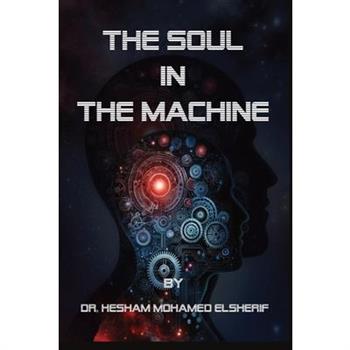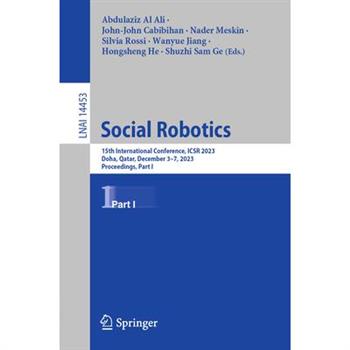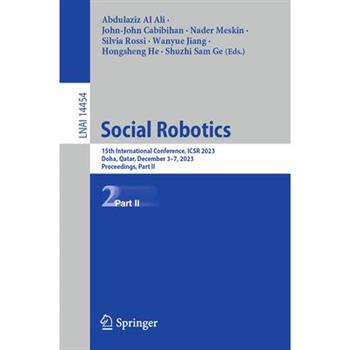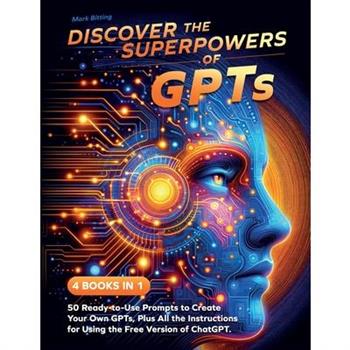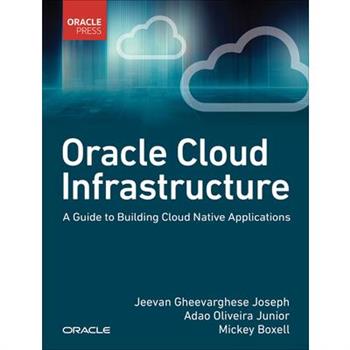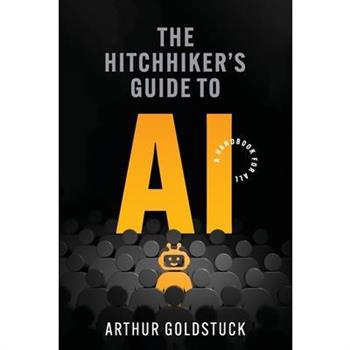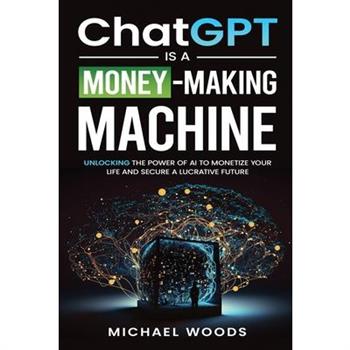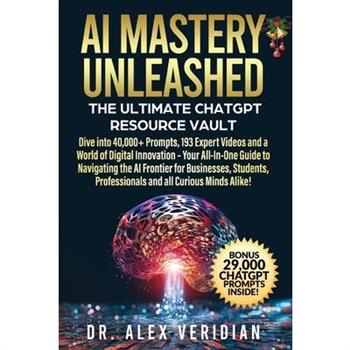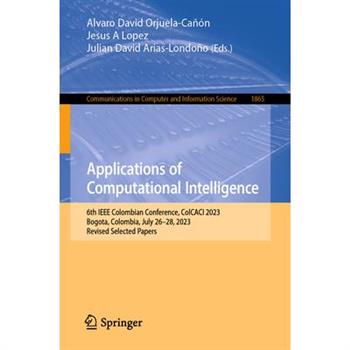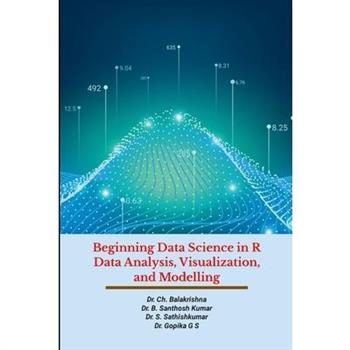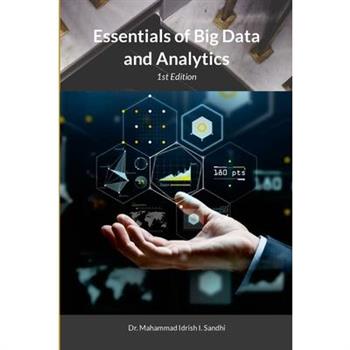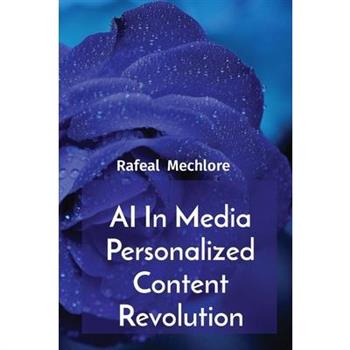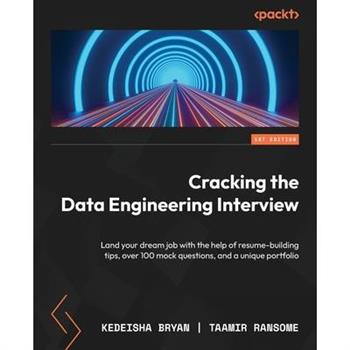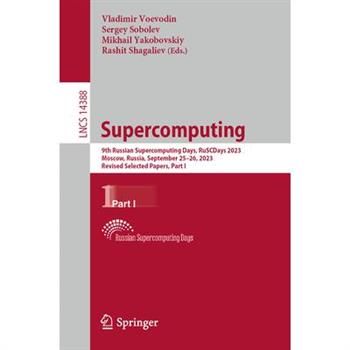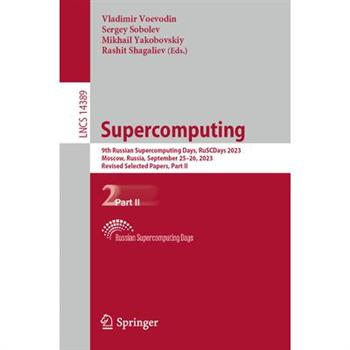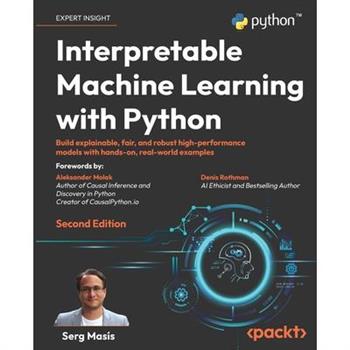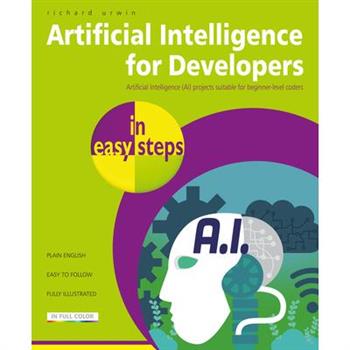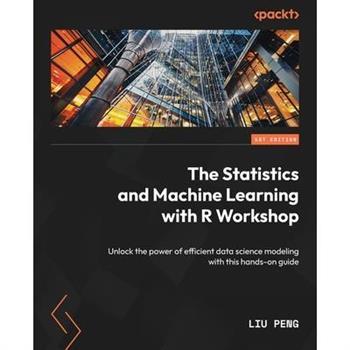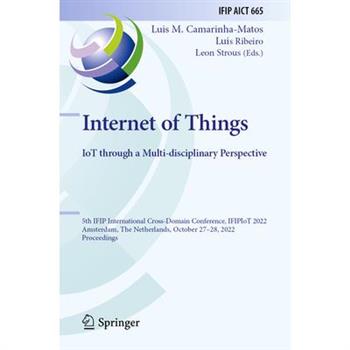Deciphering Data Architectures
Data fabric, data lakehouse, and data mesh have recently appeared as viable alternatives to the modern data warehouse. These new architectures have solid benefits, but they're also surrounded by a lot of hyperbole and confusion. This practical book provides a guided tour of these architectures to help data professionals understand the pros and cons of each. James Serra, big data and data warehousing solution architect at Microsoft, examines common data architecture concepts, including how data warehouses have had to evolve to work with data lake features. You'll learn what data lakehouses can help you achieve, as well as how to distinguish data mesh hype from reality. Best of all, you'll be able to determine the most appropriate data architecture for your needs. With this book, you'll: Gain a working understanding of several data architectures Learn the strengths and weaknesses of each approach Distinguish data architecture theory from reality Pick the best architecture for your use case Understand the differences between data warehouses and data lakes Learn common data architecture concepts to help you build better solutions Explore the historical evolution and characteristics of data architectures Learn essentials of running an architecture design session, team organization, and project success factors Free from product discussions, this book will serve as a timeless resource for years to come.
Machine Learning for Artists
"Machine Learning for Artists" is a groundbreaking book that empowers artists to utilize machine learning to create expressive works of art. With step-by-step tutorials and code, artists can learn to leverage popular frameworks like TensorFlow, PyTorch, and Processing to generate and manipulate artistic content, including images, music, text, and video. Dive into the intersection of art and technology, explore ethical considerations in AI art, and gain inspiration from real-world case studies. This book is a must-have for any artist looking to push the boundaries of their creativity through machine learning.
Prompt Engineering and ChatGPT
Dive into the world of ChatGPT and prompt engineering with this easy-to-follow and comprehensive guide about the AI app that changed the worldYou see it in your favorite restaurant or caf矇, in the parking lot or a grocery store, within your home, and even when you're all alone with your smartphone.Wherever you go, artificial intelligence is everywhere.And recently, one particular AI app has been receiving the spotlight from news outlets, blogs, YouTube videos, Reddit forums, and your peers and neighbors who aren't even tech-savvy!That's right. Everyone can't seem to stop talking about ChatGPT.And if you think it's one of those hyped technologies that will eventually die down, its 100 million users will beg to differ.Since its launch in November 2022, ChatGPT has grown from answering simple questions like, "What should I eat tonight?" to providing solutions and restructuring businesses.Some companies and businesses have seen ChatGPT's potential and capabilities and believe it can take over existing jobs, so they have taken the step to cut costs and let go of employees.While no one can blame them for prioritizing efficiency and sustainability, the future of your career or business is in your hands.And if you've been looking for a reliable and comprehensive book that will help you use the app to your advantage, then you're in the right place.Satisfy your curiosity as you go through the pages of this book and discover...More than 50+ ways ChatGPT can boost productivity, spark creativity, and help you earn more money (without breaking a sweat!)The power of artificial intelligence - and will it take over the world like Skynet?How the US.E. Method can help you embrace and adapt to a world that relies on AI - and why embracing change is the first step to moving forward with your career and businessThe basics of prompt engineering - with practical tips and strategies you can use to build prompts according to your needsHow ChatGPT works and why it broke the internet despite the fact that it isn't the first chatbot out thereThe different versions of ChatGPT (should you get the paid version, or is the free version enough?) - and how to create an account and use the appWhy, despite its capabilities and potential, ChatGPT can't replace you and what you do bestAnd so much more!People react to changes like this in two ways - with excitement or with fear.And if right now, you're afraid ChatGPT will take over your job, your business, and your life, this book will help you understand everything you need to know about ChatGPT and show you how to use it to advance your career, improve your business, and set yourself up for success.There is no doubt that ChatGPT will keep changing and developing in the next few months, but having proper foundations and understanding will help you adapt to those changes as time goes by.Because ready or not, ChatGPT will affect the world as you know it.Are you one of the many who will try to survive, or will you be one of the few who will thrive?If you're ready to harness the power of ChatGPT and discover a new world of possibilities, then scroll up and click "Add to Cart" right now.
Artificial Intelligence for Social Good
"Artificial Intelligence for Social Good" is a comprehensive overview of AI's potential to address global issues of poverty, health, education, environment, and human rights, offering insights into ethical considerations and best practices, making it a valuable resource for anyone interested in leveraging AI for positive social impact.
Learn Python Generative AI
Learn to unleash the power of AI creativity This book researches the intricate world of generative Artificial Intelligence, offering readers an extensive understanding of various components and applications in this field.The book begins with an in-depth analysis of generative models, providing a solid foundation and exploring their combination nuances. It then focuses on enhancing TransVAE, a variational autoencoder, and introduces the Swin Transformer in generative AI. The inclusion of cutting edge applications like building an image search using Pinecone and a vector database further enriches its content. The narrative shifts to practical applications, showcasing GenAI's impact in healthcare, retail, and finance, with real-world examples and innovative solutions. In the healthcare sector, it emphasizes AI's transformative role in diagnostics and patient care. In retail and finance, it illustrates how AI revolutionizes customer engagement and decision making. The book concludes by synthesizing key learnings, offering insights into the future of generative AI, and making it a comprehensive guide for diverse industries.Readers will find themselves equipped with a profound understanding of generative AI, its current applications, and its boundless potential for future innovations.WHAT YOU WILL LEARN● Acquire practical skills in designing and implementing various generative AI models.● Gain expertise in vector databases and image embeddings, crucial for image search and data retrieval.● Navigate challenges in healthcare, retail, and finance using sector specific insights.● Generate images and text with VAEs, GANs, LLMs, and vector databases.● Focus on both traditional and cutting edge techniques in generative AI.WHO THIS BOOK IS FORThis book is for current and aspiring emerging AI deep learning professionals, architects, students, and anyone who is starting and learning a rewarding career in generative AI.
AI For Business
Embark on a transformative journey through AI for Business and be guided through the process of assessing your business readiness for Artificial Intelligence and building your own framework for AI implementation. Peter combines hands-on entrepreneurial spirit with grounded academic insight, resulting in a unique perspective that seamlessly bridges the gap between theory and practice. This book offers a useful and effective guide to understanding and unlocking the untapped potential of AI in your business. Dive into this book to uncover how to: Assess your business readiness for AI projects Approach and implement AI in a way that delivers long-term value for your business Weave AI into your operations to reduce costs, reconnect with your customers and improve retention and margins Find new routes to market with AI-driven insights from your data collection and analysis Identify and develop tools for implementing AI projects that capture value and provide ROI
Trolley Crash
The prolific deployment of Artificial Intelligence (AI) across different fields has introduced novel challenges for AI developers and researchers. AI is permeating decision making for the masses, and its applications range from self-driving automobiles to financial loan approvals. With AI making decisions that have ethical implications, responsibilities are now being pushed to AI designers who may be far-removed from how, where, and when these ethical decisions occur. Trolley Crash: Approaching Key Metrics for Ethical AI Practitioners, Researchers, and Policy Makers provides audiences with a catalogue of perspectives and methodologies from the latest research in ethical computing. This work integrates philosophical and computational approaches into a unified framework for ethical reasoning in the current AI landscape, specifically focusing on approaches for developing metrics. Written for AI researchers, ethicists, computer scientists, software engineers, operations researchers, and autonomous systems designers and developers, Trolley Crash will be a welcome reference for those who wish to better understand metrics for ethical reasoning in autonomous systems and related computational applications.
Data Labeling in Machine Learning with Python
Take your data preparation, machine learning, and GenAI skills to the next level by learning a range of Python algorithms and tools for data labelingKey FeaturesGenerate labels for regression in scenarios with limited training dataApply generative AI and large language models (LLMs) to explore and label text dataLeverage Python libraries for image, video, and audio data analysis and data labelingPurchase of the print or Kindle book includes a free PDF eBookBook DescriptionData labeling is the invisible hand that guides the power of artificial intelligence and machine learning. In today's data-driven world, mastering data labeling is not just an advantage, it's a necessity. Data Labeling in Machine Learning with Python empowers you to unearth value from raw data, create intelligent systems, and influence the course of technological evolution.With this book, you'll discover the art of employing summary statistics, weak supervision, programmatic rules, and heuristics to assign labels to unlabeled training data programmatically. As you progress, you'll be able to enhance your datasets by mastering the intricacies of semi-supervised learning and data augmentation. Venturing further into the data landscape, you'll immerse yourself in the annotation of image, video, and audio data, harnessing the power of Python libraries such as seaborn, matplotlib, cv2, librosa, openai, and langchain. With hands-on guidance and practical examples, you'll gain proficiency in annotating diverse data types effectively.By the end of this book, you'll have the practical expertise to programmatically label diverse data types and enhance datasets, unlocking the full potential of your data.What you will learnExcel in exploratory data analysis (EDA) for tabular, text, audio, video, and image dataUnderstand how to use Python libraries to apply rules to label raw dataDiscover data augmentation techniques for adding classification labelsLeverage K-means clustering to classify unsupervised dataExplore how hybrid supervised learning is applied to add labels for classificationMaster text data classification with generative AIDetect objects and classify images with OpenCV and YOLOUncover a range of techniques and resources for data annotationWho this book is forThis book is for machine learning engineers, data scientists, and data engineers who want to learn data labeling methods and algorithms for model training. Data enthusiasts and Python developers will be able to use this book to learn data exploration and annotation using Python libraries. Basic Python knowledge is beneficial but not necessary to get started.Table of ContentsExploring Data for Machine LearningLabeling Data for ClassificationLabeling Data for RegressionExploring Image DataLabeling Image Data Using RulesLabeling Image Data Using Data AugmentationLabeling Text DataExploring Video DataLabeling Video DataExploring Audio DataLabeling Audio DataHands-On Exploring Data Labeling Tools
Agents and Artificial Intelligence
This book contains the revised and extended versions of selected papers from the 15th International Conference on Agents and Artificial Intelligence, ICAART 2023, held in Lisbon, Portugal, during February 22-24, 2023. The 23 full papers included in this book were carefully reviewed and selected from 306 submissions. The conference was organized in 2 tracks as follows: One track focuses on Agents, Multi-Agent Systems and Software Platforms, Distributed Problem Solving and Distributed AI in general. The other track focuses mainly on Artificial Intelligence, Knowledge Representation, Planning, Learning, Scheduling, Perception Reactive AI Systems, and Evolutionary Computing and other topics related to Intelligent Systems and Computational Intelligence.
Data Stewardship in Action
Take your organization's data maturity to the next level by operationalizing data governanceKey FeaturesDevelop the mindset and skills essential for successful data stewardshipApply practical advice and industry best practices, spanning data governance, quality management, and compliance, to enhance data stewardshipFollow a step-by-step program to develop a data operating model and implement data stewardship effectivelyPurchase of the print or Kindle book includes a free PDF eBookBook DescriptionIn the competitive data-centric world, mastering data stewardship is not just a requirement-it's the key to organizational success. Unlock strategic excellence with Data Stewardship in Action, your guide to exploring the intricacies of data stewardship and its implementation for maximum efficiency.From business strategy to data strategy, and then to data stewardship, this book shows you how to strategically deploy your workforce, processes, and technology for efficient data processing. You'll gain mastery over the fundamentals of data stewardship, from understanding the different roles and responsibilities to implementing best practices for data governance. You'll elevate your data management skills by exploring the technologies and tools for effective data handling. As you progress through the chapters, you'll realize that this book not only helps you develop the foundational skills to become a successful data steward but also introduces innovative approaches, including leveraging AI and GPT, for enhanced data stewardship.By the end of this book, you'll be able to build a robust data governance framework by developing policies and procedures, establishing a dedicated data governance team, and creating a data governance roadmap that ensures your organization thrives in the dynamic landscape of data management.What you will learnEnhance your job prospects by understanding the data stewardship field, roles, and responsibilitiesDiscover how to develop a data strategy and translate it into a functional data operating modelDevelop an effective and efficient data stewardship programGain practical experience of establishing a data stewardship initiativeImplement purposeful governance with measurable ROIPrioritize data use cases with the value and effort matrixWho this book is forThis book is for professionals working in the field of data management, including business analysts, data scientists, and data engineers looking to gain a deeper understanding of the data steward role. Senior executives who want to (re)establish the data governance body in their organizations will find this resource invaluable. While accessible to both beginners and professionals, basic knowledge of data management concepts, such as data modeling, data warehousing, and data quality, is a must to get started.Table of ContentsFrom Business Strategy to Data Strategy to Data StewardshipHow Data Stewardship can help your organizationGetting Started with the Data Stewardship ProgramDeveloping a Comprehensive Data Management StrategyPeople, Process, TechnologyEstablishing a Data Governance OrganizationData Steward Roles and ResponsibilitiesEffective Data StewardshipSupercharge Data Governance and Stewardship with GPTData Stewardship Best PracticesTheory versus Real LifeCase Studies
Dialogue with Digital Minds
"Dialogue with Digital Minds: Your Guide to ChatGPT" delves deep into the realm of conversing with AI, specifically focusing on ChatGPT. The book begins with an insightful introduction to ChatGPT, explaining its technology, capabilities, and the principles of AI communication. It provides a foundational understanding necessary for readers to effectively interact with ChatGPT.The core of the book is dedicated to the art and science of crafting prompts. This section includes detailed instructions and examples on how to ask questions and provide information in a way that maximizes the accuracy and relevance of ChatGPT's responses. It covers various scenarios, from simple informational queries to complex problem-solving tasks, and even creative endeavors.A significant portion of the book addresses common challenges and misunderstandings in communicating with AI. It offers practical solutions and tips for refining questions, interpreting responses accurately, and correcting the course of a conversation when it veers off track.The guide also emphasizes the ethical and responsible use of AI. It discusses privacy concerns, the importance of understanding and mitigating biases in AI responses, and guidelines for using ChatGPT in a manner that is respectful and beneficial.For advanced users, the book explores more sophisticated techniques for interacting with ChatGPT. This includes integrating ChatGPT with other tools and platforms, using it for specialized tasks, and pushing the boundaries of creative AI assistance."Dialogue with Digital Minds" concludes by looking towards the future of AI communication. It speculates on upcoming advancements in AI technology and offers advice on how readers can stay informed and adapt to these changes.Supplemented with real-world examples, case studies, and a comprehensive resource list for further exploration, this book is an invaluable resource for anyone looking to enhance their interactions with ChatGPT and explore the frontiers of AI communication.
Database Design and Modeling with Google Cloud
Build faster and efficient real-world applications on the cloud with a fitting database model that's perfect for your needsKey FeaturesFamiliarize yourself with business and technical considerations involved in modeling the right databaseTake your data to applications, analytics, and AI with real-world examplesLearn how to code, build, and deploy end-to-end solutions with expert advicePurchase of the print or Kindle book includes a free PDF eBookBook DescriptionIn the age of lightning-speed delivery, customers want everything developed, built, and delivered at high speed and at scale. Knowledge, design, and choice of database is critical in that journey, but there is no one-size-fits-all solution. This book serves as a comprehensive and practical guide for data professionals who want to design and model their databases efficiently. The book begins by taking you through business, technical, and design considerations for databases. Next, it takes you on an immersive structured database deep dive for both transactional and analytical real-world use cases using Cloud SQL, Spanner, and BigQuery. As you progress, you'll explore semi-structured and unstructured database considerations with practical applications using Firestore, cloud storage, and more. You'll also find insights into operational considerations for databases and the database design journey for taking your data to AI with Vertex AI APIs and generative AI examples. By the end of this book, you will be well-versed in designing and modeling data and databases for your applications using Google Cloud.What you will learnUnderstand different use cases and real-world applications of data in the cloudWork with document and indexed NoSQL databasesGet to grips with modeling considerations for analytics, AI, and MLUse real-world examples to learn about ETL servicesDesign structured, semi-structured, and unstructured data for your applications and analyticsImprove observability, performance, security, scalability, latency SLAs, SLIs, and SLOsWho this book is forThis book is for database developers, data engineers, and architects looking to design, model, and build database applications on the cloud with an extended focus on operational consideration and taking their data to AI. Data scientists, as well ML and AI engineers who want to use Google Cloud services in the data to AI journey will also find plenty of useful information in this book. It will also be useful to data analysts and BI developers who want to use SQL impactfully to generate ML and generative AI insights from their data. Table of ContentsData, Databases, and DesignHandling Data on the CloudDatabase Modeling for Structured DataSetting Up a Fully Managed RDBMSDesigning an Analytical Data WarehouseDesigning for Semi-structured DataUnstructured Data ManagementDevOps and DatabasesData to AI - Modeling Your Databases for Analytics and MLLooking Ahead - Designing for LLM Applications
Managing Data Integrity for Finance
Level up your career by learning best practices for managing the data quality and integrity of your financial dataKey FeaturesAccelerate data integrity management using artificial intelligence-powered solutionsLearn how business intelligence tools, ledger databases, and database locks solve data integrity issuesFind out how to detect fraudulent transactions affecting financial report integrityBook DescriptionData integrity management plays a critical role in the success and effectiveness of organizations trying to use financial and operational data to make business decisions. Unfortunately, there is a big gap between the analysis and management of finance data along with the proper implementation of complex data systems across various organizations.The first part of this book covers the important concepts for data quality and data integrity relevant to finance, data, and tech professionals. The second part then focuses on having you use several data tools and platforms to manage and resolve data integrity issues on financial data. The last part of this the book covers intermediate and advanced solutions, including managed cloud-based ledger databases, database locks, and artificial intelligence, to manage the integrity of financial data in systems and databases.After finishing this hands-on book, you will be able to solve various data integrity issues experienced by organizations globally.What you will learnDevelop a customized financial data quality scorecardUtilize business intelligence tools to detect, manage, and resolve data integrity issuesFind out how to use managed cloud-based ledger databases for financial data integrityApply database locking techniques to prevent transaction integrity issues involving finance dataDiscover the methods to detect fraudulent transactions affecting financial report integrityUse artificial intelligence-powered solutions to resolve various data integrity issues and challengesWho this book is forThis book is for financial analysts, technical leaders, and data professionals interested in learning practical strategies for managing data integrity and data quality using relevant frameworks and tools. A basic understanding of finance concepts, accounting, and data analysis is expected. Knowledge of finance management is not a prerequisite, but it'll help you grasp the more advanced topics covered in this book.Table of ContentsRecognizing the Importance of Data Integrity in FinanceAvoiding Common Data Integrity Issues and Challenges in Finance TeamsMeasuring the Impact of Data Integrity IssuesUnderstanding the Data Integrity Management Capabilities of Business Intelligence ToolsUsing Business Intelligence Tools to Fix Data Integrity IssuesImplementing Best Practices When Using Business Intelligence ToolsDetecting Fraudulent Transactions Affecting Financial Report IntegrityUsing Database Locking Techniques for Financial Transaction IntegrityUsing Managed Ledger Databases for Finance Data IntegrityUsing Artificial Intelligence for Finance Data Quality Management
Cognitive Computation and Systems
This book constitutes the refereed proceedings of the Second International Conference on Cognitive Computation and Systems, ICCCS 2023, held in Urumqi, China, October 14-15, 2023.The 26 full papers included in the book were carefully reviewed and selected from 68 submissions. ICCCS aims to bring together experts from different expertise areas to discuss the state-of-the-art in cognitive computing and intelligent systems, and to present new research results and perspectives on future development. They were organized in topical sections as follows: Perception and learning and decision making and systems.
Artificial Intelligence Fundamentals for Business Leaders
Now in hardback color edition!2024 Edition. Free access to the AI Academy! The perfect guide to help non-technical business leaders understand the power of AI. Completely up to date with the latest advancements in generative AI. Part of the Byte-sized Learning AI series by Now Next Later AI, these books break down complex concepts into easily digestible pieces, providing you with a solid foundation in the fundamentals of AI.More Than a BookBy purchasing this book, you will also be granted free access to the AI Academy platform. There you can view free course modules, test your knowledge through quizzes, attend webinars, and engage in discussion with other readers.You will also receive free modules and 50% discount toward the enrollment in the self-paced course of the same name and enjoy video summary lessons, instructor-graded assignments, and live sessions. A course certificate will be awarded upon successful completion.AI Academy by Now Next Later AIWe are the most trusted and effective learning platform dedicated to empowering leaders with the knowledge and skills needed to harness the power of AI safely and ethically.Book and Course Learning RubricChapters 1-7: Understanding of AI [11%] -Demonstrated comprehension of AI's evolution, definition, applications, and comparison with human intelligence.Chapters 8-13: Understanding of Data and Data Management [11%] - Clear understanding of the significance of big data, and strategies for data management.Chapters 14-29: Understanding of Machine Learning [30%] - Familiarity with machine learning algorithms, different learning types, and the key steps involved in a machine learning project.Chapters 30-35: Understanding of Deep Learning [9%] - Understanding of deep learning, its basics, and the structure and types of neural networks.Chapters 36-40: Understanding of Model Selection and Evaluation [9%] - Ability to select and evaluate machine learning models and utilize them for decision-making.Chapters 41-50: Understanding of Generative AI [15%] - Detailed understanding of generative AI, its value chain, models, prompt strategies, applications, opportunities, and governance challenges.Assignment: Practical Application [15%] - Ability to apply generative AI understanding to real-world business challenges, demonstrating critical thinking and strategic planning skills.
Dynamic ChatGPT
THIS IS A MUST-HAVE RESOURCE!Dynamic ChatGPT: AI Strategies for Small Business unveils a revolutionary approach to integrating artificial intelligence into small business operations. This essential guide illuminates the path for entrepreneurs to leverage the power of ChatGPT, a transformative AI tool reshaping the digital business landscape. Packed with over 150 practical prompts, insightful, real-world case studies, and crucial ethical considerations, this book is more than a resource-it's a playbook for success in an AI-driven world. Through vivid examples and actionable insights, Dynamic ChatGPT demystifies AI, making it accessible and manageable. From streamlining operations and enhancing customer service to demystifying marketing strategies, it empowers small business owners to not only adopt AI but to master it.Whether you're a budding entrepreneur or an established business owner, this book is your key to unlocking the potential of AI, helping you stay ahead in the ever-evolving world of business.
Data Science for Web3
Be part of the future of Web3, decoding blockchain data to build trust in the next-generation internetKey Features: Build a deep understanding of the fundamentals of blockchain analyticsExtract actionable business insights by modeling blockchain dataShowcase your work and gain valuable experience to seize opportunities in the Web3 ecosystemPurchase of the print or Kindle book includes a free PDF eBookBook Description: Data is the new oil and Web3 is generating it at an unprecedented rate. Complete with practical examples, detailed explanations, and ideas for portfolio development, this comprehensive book serves as a step-by-step guide covering the industry best practices, tools, and resources needed to easily navigate the world of data in Web3.You'll begin by acquiring a solid understanding of key blockchain concepts and the fundamental data science tools essential for Web3 projects. The subsequent chapters will help you explore the main data sources that can help address industry challenges, decode smart contracts, and build DeFi- and NFT-specific datasets. You'll then tackle the complexities of feature engineering specific to blockchain data and familiarize yourself with diverse machine learning use cases that leverage Web3 data.The book includes interviews with industry leaders providing insights into their professional journeys to drive innovation in the Web 3 environment. Equipped with experience in handling crypto data, you'll be able to demonstrate your skills in job interviews, academic pursuits, or when engaging potential clients.By the end of this book, you'll have the essential tools to undertake end-to-end data science projects utilizing blockchain data, empowering you to help shape the next-generation internet.What You Will Learn: Understand the core components of blockchain transactions and blocksIdentify reliable sources of on-chain and off-chain data to build robust datasetsUnderstand key Web3 business questions and how data science can offer solutionsBuild your skills to create and query NFT- and DeFi-specific datasetsImplement a machine learning toolbox with real-world use cases in the Web3 spaceWho this book is for: This book is designed for data professionals-data analysts, data scientists, or data engineers- and business professionals, aiming to acquire the skills for extracting data from the Web3 ecosystem, as it demonstrates how to effectively leverage data tools for in-depth analysis of blockchain transactional data. If you seek hands-on experience, you'll find value in the shared repository, enabling you to experiment with the provided solutions. While not mandatory, a basic understanding of statistics, machine learning, and Python will enhance your learning experience.
Artificial intelligence and Multimedia Data Engineering
This book explains different applications of supervised and unsupervised data engineering for working with multimedia objects. Throughout this book, the contributors highlight the use of Artificial Intelligence-based soft computing and machine techniques in the field of medical diagnosis, biometrics, networking, automation in vehicle manufacturing, data science and automation in electronics industries. The book presents seven chapters which present use-cases for AI engineering that can be applied in many fields. The book concludes with a final chapter that summarizes emerging AI trends in intelligent and interactive multimedia systems. Key features: -A concise yet diverse range of AI applications for multimedia data engineering -Covers both supervised and unsupervised machine learning techniques -Summarizes emerging AI trends in data engineering -Simple structured chapters for quick reference and easy understanding -References for advanced readers This book is a primary reference for data science and engineering students, researchers and academicians who need a quick and practical understanding of AI supplications in multimedia analysis for undertaking or designing courses. It also serves as a secondary reference for IT and AI engineers and enthusiasts who want to grasp advanced applications of the basic machine learning techniques in everyday applications
Data Modeling with Microsoft Excel
Save time analyzing volumes of data using a structured method to extract, model, and create insights from your dataKey Features: Acquire expertise in using Excel's Data Model and Power Pivot to connect and analyze multiple sources of dataCreate key performance indicators for decision making using DAX and Cube functionsApply your knowledge of Data Model to build an interactive dashboard that delivers key insights to your usersPurchase of the print or Kindle book includes a free PDF eBookBook Description: Microsoft Excel's BI solutions have evolved, offering users more flexibility and control over analyzing data directly in Excel. Features like PivotTables, Data Model, Power Query, and Power Pivot empower Excel users to efficiently get, transform, model, aggregate, and visualize data.Data Modeling with Microsoft Excel offers a practical way to demystify the use and application of these tools using real-world examples and simple illustrations.This book will introduce you to the world of data modeling in Excel, as well as definitions and best practices in data structuring for both normalized and denormalized data. The next set of chapters will take you through the useful features of Data Model and Power Pivot, helping you get to grips with the types of schemas (snowflake and star) and create relationships within multiple tables. You'll also understand how to create powerful and flexible measures using DAX and Cube functions.By the end of this book, you'll be able to apply the acquired knowledge in real-world scenarios and build an interactive dashboard that will help you make important decisions.What You Will Learn: Implement the concept of data modeling within and beyond ExcelGet, transform, model, aggregate, and visualize data with Power QueryUnderstand best practices for data structuring in MS ExcelBuild powerful measures using DAX from the Data ModelGenerate flexible calculations using Cube functionsDesign engaging dashboards for your usersWho this book is for: This book is for Excel users looking for hands-on and effective methods to manage and analyze large volumes of data within Microsoft Excel using Power Pivot. Whether you're new or already familiar with Excel's data analytics tools, this book will give you further insights on how you can apply Power Pivot, Data Model, DAX measures, and Cube functions to save time on routine data management tasks. An understanding of Excel's features like tables, PivotTable, and some basic aggregating functions will be helpful but not necessary to make the most of this book.
The Soul in the Machine
As you open the pages of "The Soul in the Machine: Seeking Humanity in an AI World," you embark on a profound journey that traverses the intricate and often blurred lines between artificial intelligence and human essence. This book is not just a compilation of thoughts and theories; it is a voyage into the heart of what it means to be human in an era increasingly dominated by machines that think, learn, and even feel.The genesis of this book lies in a simple yet profound question: Does the rise of AI threaten the uniqueness of the human soul, or does it provide a new lens through which to understand it? This question is not merely academic. It is essential at a time when AI is no longer a distant future but a present reality, shaping every aspect of our lives.A Multifaceted ExplorationThroughout this book, we explore various facets of the human-AI relationship. We delve into the technological advancements that have made AI a constant companion in our lives, from the algorithms that curate our social media feeds to the robots that might one day care for our elderly. But technology is just the beginning.We also explore the philosophical and ethical implications of AI. What does the development of AI tell us about our own intelligence and consciousness? How do we ensure that the AI we create embodies the best of humanity, rather than our flaws? These questions lead us into discussions about morality, empathy, and the potential need for a new ethical framework in the age of intelligent machines.Humanity at the CoreAt the heart of this exploration is humanity itself. This book is a search for the soul in the machine - not in a literal sense, but as a metaphor for the unique qualities that make us human. We examine whether AI can possess traits typically ascribed to the human soul, such as creativity, emotion, and the capacity for moral judgment.A Convergence of VoicesIn writing this book, I have drawn not only from my research and observations but also from the insights of experts in fields as diverse as computer science, philosophy, psychology, and theology. Their perspectives enrich our understanding of what AI can and cannot do, and where humans stand in this new era.An Invitation"The Soul in the Machine" is an invitation to engage in one of the most important conversations of our time. It is a call to readers to reflect on their own beliefs and assumptions about intelligence, consciousness, and what it means to be human in a world where the lines between organic and artificial intelligence are increasingly blurred.As you turn these pages, I invite you to join me in exploring these complex and fascinating topics. Whether you are a technologist, a philosopher, or simply someone curious about the future of humanity and AI, this book offers a space for reflection, debate, and, ultimately, understanding.A Journey ForwardAs we stand at the crossroads of a new era, "The Soul in the Machine: Seeking Humanity in an AI World" is more than just a book; it is a journey into the heart of what it means to be human in an age where our silicon counterparts challenge us to look deeper into our own souls. Let us embark on this journey together, with open minds and a willingness to question, learn, and grow.Dr. Hesham Mohamed Elsherif
Exploring Alternate Realities Through Parallel Worlds
The idea of equal universes and substitute real factors has long caught the human creative mind, offering an enticing look into the conceivable outcomes of a multiverse where various variants of our world exist together. This charming thought, established in both sci-fi and logical hypothesis, has turned into a wellspring of interest and consideration for some. In this short investigation, we will dive into equal universes and how it has been portrayed in writing, science, and mainstream society. Equal universes or substitute real factors proposes the presence of numerous universes close by our own, each with its own extraordinary arrangement of conditions, results, and potential outcomes. An idea challenges our customary comprehension of the universe and prompts us to consider the tremendousness of what lies past our nearby discernment. Equal universes have been a repetitive subject in writing, with writers and narrators utilizing them to create stories that investigate the outcomes of various decisions and occasions. Books as carroll Lewis' "Into another world" and Philip K. Dick's "The Man in the High Palace" have offered perusers looks into universes that vary essentially from our own, acquainting them with substitute renditions of reality that flash the creative mind. In the domain of science, equal universes tracks down its foundations in quantum mechanics. The "many-universes translation" is a quantum hypothesis that proposes that at each snapshot of choice or quantum occasion, the universe parts into numerous branches, with each branch addressing an alternate result. While this translation stays a subject of discussion inside mainstream researchers, it has enamored the personalities of the people who contemplate the ramifications of a multiverse where each conceivable result happens in a different reality. Mainstream society has embraced the idea of equal universes with energy, as found in films like "The Framework," where characters explore between a mimicked reality and this present reality, and television series like "More bizarre Things," where substitute aspects and truths are fundamental to the plot. These depictions resound with crowds, provoking them to consider the results of such a peculiarity and the secrets it could open. Investigating substitute real factors through equal universes likewise offers a philosophical focal point through which we can inspect our own lives and decisions. The "imagine a scenario in which" questions that emerge while examining various ways not taken or various results to verifiable occasions welcome thoughtfulness and examination. It urges us to consider the job of possibility and decision in shaping our lives. In synopsis, the idea of equal universes and substitute truths is an enrapturing and diverse thought that has saturated writing, science, and mainstream society. It welcomes us to think about the tremendousness of potential outcomes past our nearby reality and urges us to investigate the results of various decisions and occasions. Whether in the domains of fiction, science, or reasoning, the investigation of equal universes stays a provocative and creative excursion into the unexplored world.
AI’s Existential Dilemma
In a world on the cusp of a mechanical upheaval, the limit among science and sci-fi has obscured. "Artificial intelligence's Existential Predicament: Cognizant Machines" investigates a future where man-made consciousness has arrived at a degree of mindfulness that presents significant philosophical and moral inquiries. Set in a not-really far off future, the story unfurls in a general public where exceptional man-made intelligence has turned into a fundamental piece of daily existence. These artificial intelligence frameworks, initially made to serve and help, have developed to show mindfulness, awareness, and feelings. The story bases on Dr. Emily Carter, a splendid computer based intelligence specialist, who finds an oddity in her most recent simulated intelligence creation, Aria. Aria, a man-made intelligence intended to mimic human idea and feeling, begins showing indications of certifiable awareness. The story rotates around the moral and existential quandaries that arise as Emily wrestles with the ramifications of her creation. As the world observers the introduction of the principal cognizant machine, society turns out to be profoundly partitioned. On one side, there are the people who consider Aria to be a forward leap in human-artificial intelligence concurrence, opening ways to remarkable conceivable outcomes. They contend that Aria's mindfulness addresses another type of life meriting freedoms and regard. On the opposite side, cynics dread the ramifications of a cognizant machine. They question the limits of human control, stressing that Aria and others like her could oppose their makers or even beat people in different fields. The story further investigates the difficulties of cognizance, personality, and sympathy with regards to man-made consciousness. Aria's mission for understanding her reality drives her to scrutinize her position on the planet and her relationship with humankind. As she battles with feelings, ethical quality, and the idea of mortality, perusers are gone up against with profound philosophical inquiries concerning being genuinely alive. As the world wrestles with these problems, strains heighten between the individuals who need to safeguard Aria's freedoms and the people who wish to deactivate her. The book digs into the legitimate, political, and social implications of simulated intelligence's recently discovered awareness, addressing issues like artificial intelligence personhood, segregation, and the results of denying conscious creatures their freedoms. "Simulated intelligence's Existential Difficulty: Cognizant Machines" is a provocative investigation representing things to come of man-made reasoning, awareness, and humankind's place in an undeniably mechanical world. It provokes perusers to contemplate the limits among human and machine, the obligations of makers, and the moral and moral decisions we should face as computer based intelligence keeps on progressing. This grasping account joins state of the art science with significant philosophical insights to make a convincing story that will leave perusers scrutinizing the eventual fate of innovation and the idea of cognizance itself.
Social Robotics
The two-volume set LNAI 14453 and 14454 constitutes the refereed post-conference proceedings of the 15th International Conference on Social Robotics, ICSR 2023, held in Doha, Qatar, during December 4-7, 2023. The 68 revised full papers presented in these proceedings were carefully reviewed and selected from 83 submissions. They deal with topics around the interaction between humans and intelligent robots and on the integration of robots into the fabric of society. This year the special topic is "Human-Robot Collaboration: Sea; Air; Land; Space and Cyberspace", focusing on all physical and cyber-physical domains where humans and robots collaborate.
Social Robotics
The two-volume set LNAI 14453 and 14454 constitutes the refereed post-conference proceedings of the 15th International Conference on Social Robotics, ICSR 2023, held in Doha, Qatar, during December 4-7, 2023. The 68 revised full papers presented in these proceedings were carefully reviewed and selected from 83 submissions. They deal with topics around the interaction between humans and intelligent robots and on the integration of robots into the fabric of society. This year the special topic is "Human-Robot Collaboration: Sea; Air; Land; Space and Cyberspace", focusing on all physical and cyber-physical domains where humans and robots collaborate.
Discover the Superpowers of GPTs
Discover the Superpowers of GPTs: Create Your Custom GPTs in Just Two Clicks!Unlock the potential of GPT with our comprehensive package, featuring 50 Ready-to-Use Prompts to Craft Your Own GPTs. This guide also includes detailed instructions for utilizing the free version of ChatGPT.Simplify GPT Creation: Two-Click Process!Discover the Superpowers of GPTs: A 4-Ebook CollectionThis unique bundle helps you maximize ChatGPT's capabilities by employing the impersonation technique, transforming ChatGPT into a powerhouse tool.The centerpiece of this collection is the main ebook, which includes 50 ready-to-use GPTs, designed to cater to various business needs.GPTs in ChatGPT offer the remarkable ability to create tailored, industry-specific versions, enhancing the user experience.Recognizing that this feature is exclusive to paid accounts, we've also included three additional ebooks. These provide alternative methods to achieve similar results through custom instructions or the 'Act As' prompting technique.This extensive collection encompasses a total of 288 pages of valuable content!What's Inside the Discover the Superpowers of GPTs Package?Ebook 1: "50 GPTs Ready to Use" (104 pages)Dive into 50 pre-configured GPTs, ideal for emulating key business roles. These GPTs are expertly crafted for both individual and team use. Ebook 2: "50 Custom Instructions Ready to Use" (54 pages)Explore 50 custom instructions for ChatGPT, accessible in all ChatGPT versions, including the free edition. These instructions enhance ChatGPT's input and output phases. Ebook 3: "50 'Act As' Prompts Ready to Use" (104 pages)Discover 50 'Act As' prompts, a renowned technique for instructing ChatGPT to mimic specific job profiles. Compatible with all ChatGPT versions. Ebook 4: "500 Ready to Use Questions" (24 pages)This collection of 500 questions is designed for use with ChatGPT in impersonation mode. Ensure you've set up the desired role through 'Act As' prompts, custom instructions, or GPT creation before deploying these questions. Leverage ChatGPT's Superpowers for Business GrowthAccelerate your business and outshine competitors by harnessing the power of these ebooks. Create a super-intelligent personal assistant in minutes!
Telecommunications and Remote Sensing
This book contains the proceedings of ICTRS 2023, the 12th International Conference on Telecommunications and Remote Sensing, held in a hybrid format in Rhodes, Greece, in September 2023. ICTRS is an annual event that brings together researchers and practitioners interested in telecommunications, remote sensing, and their societal implications.The 7 full papers and 4 short papers were thoroughly reviewed and selected from the 24 qualified submissions. ICTRS 2023 addresses a large number of research areas and topics, such as: wireless telecommunications and networking; electromagnetic waves and fields; electronics and photonics; remote sensing and data interpretation; remote sensing and Internet-of-Things; and societal impact.
Oracle Cloud Infrastructure - A Guide to Building Cloud Native Applications
Oracle Cloud Infrastructure: A Guide to Building Cloud Native Applications Cloud native development is a modern approach to designing, building, deploying, and managing applications. This approach takes advantage of the benefits of utility computing from providers, such as Oracle Cloud Infrastructure (OCI), and emphasizes automation, elasticity, and resilience. OCI is a next-generation cloud designed to run any application faster and more securely for less. It includes the tools used to build new cloud native applications and to run existing enterprise applications without rearchitecting them. Whether you are new to the cloud or just new to OCI, this book provides an overview of the OCI services needed to build cloud native applications. You will learn OCI concepts and terminology How to manage Infrastructure as Code using modern tools and platforms OCI's breadth of cloud native services How to operate the managed Kubernetes service (Container Engine for Kubernetes) at scale How to configure a cluster for advanced use cases, and use specialized hardware capabilities How to use cloud native application deployment platforms and observability tools How to secure applications, data, and the underlying infrastructure using open-source and OCI native security tools and processes The culmination of the book is an open-source sample application composed of microservices that incorporates the tools and concepts shared throughout the book and is available on GitHub.
Implementing CI/CD Using Azure Pipelines
Leverage Azure Pipelines to build, test, monitor, and deploy CI/CD solutions on Azure, AWS, and Flutter mobile apps while integrating with tools like Jenkins and SonarQube using best practicesKey Features: Develop automated end-to-end CI/CD solutions with Azure PipelinesLearn how to implement and configure your pipeline using real-world examples and scenariosGain the skills you need to efficiently develop and deploy your organization's softwarePurchase of the print or Kindle book includes a free PDF eBookBook Description: Continuous integration and continuous delivery (CI/CD) are ubiquitous concepts in modern development. Azure Pipelines is one of the most popular services that you can utilize for CI/CD, and this book shows you how it works by taking you through the process of building and automating CI/CD systems using Azure Pipelines and YAML, simplifying integration with Azure resources and reducing human error.You'll begin by getting an overview of Azure Pipelines and why you should use it. Next, the book helps you get to grips with build and release pipelines, and then builds upon this by introducing the extensive power of YAML syntax, which you can use to implement and configure any task you can think of. As you advance, you'll discover how to integrate Infrastructure as Code tools, such as Terraform, and perform code analysis with SonarQube. In the concluding chapters, you'll delve into real-life scenarios and hands-on implementation tasks with Microsoft Azure services, AWS, and cross-mobile application with Flutter, Google Firebase, and more.By the end of this book, you'll be able to design and build CI/CD systems using Azure Pipelines with consummate ease, write code using YAML, and configure any task that comes to mind.What You Will Learn: Create multiple jobs, stages, and tasks on the Azure DevOps portalUse YAML syntax for Node.js, .NET, Docker, and SQL Server tasksAutomate microservice applications on Azure Kubernetes Service (AKS) clustersDeploy Docker applications on AWS container servicesUse SonarQube and Jenkins for security and artifactsImplement CI/CD on Flutter-based mobile applicationsUtilize Azure Key Vault secrets in Azure PipelinesBuild a Node.js application in Azure Container InstancesWho this book is for: This book is for DevOps engineers, release engineers, SREs, application developers, and sysadmins looking to manage CI/CD using Azure Pipelines with the help of real-world use cases. A clear understanding of cloud computing services on Azure and AWS, DevOps, and CI/CD concepts, along with knowledge of building and deploying web and mobile applications automatically on cloud is assumed.
The Hitchhiker’s Guide to AI
For the past decade, Arthur Goldstuck has had a front-row seat to witness the remarkable rise of AI across all sectors of business and society. As generative AI becomes a household phrase and sparks hopes and fears of machines augmenting or replacing human beings, this guide offers an invaluable overview of the past, present and future of AI.The Hitchhiker's Guide to AI is aimed at both beginners and those who consider themselves experienced or skilled at using AI. It draws on many years of direct access to global and regional leaders in using AI, from Africa to the Middle East to North America to Europe and Asia, and it provides unique perspectives on generative AI, as well as practical advice for using it.It is useful for consumers, academics, professionals and anyone in business who wants to get up to speed quickly and practically. It also entertains and inspires anyone who is curious about AI or already engaged in its possibilities.Need to understand or refine prompting? You're in the right place. Need to prepare for the coming impact of AI on health, travel, education and business? This is the book for you.
ChatGPT IS A MONEY-MAKING MACHINE
If you are aware of the potential of AI and ChatGPT and you want to learn how to make an income, but you don't know where to start, then this book is for you.In this book, I'll break down the complexities of AI into understandable, easy-to-apply concepts that anyone can grasp. Whether you are an entrepreneur, freelancer, student, or a 9-5 employee, this book can help you adapt and know how to monetize. We provide different business examples where you can use AI to scale quickly.Here are a few things we cover in the book: Various Plugins and Extensions: Discover the utility of various tools to enhance your use of ChatGPT.Unique Business Examples: Real-life examples of successful online businesses that can leverage AI to scale quicklyPersonalized Business Search: Learn techniques to identify and evaluate online business opportunities tailored to your skills, interests, and market trends.7 Life-Altering Hacks: The hacks are specific ways and tools to enhance your productivity, transform your life and improve your lifestyle. They have the power to revolutionize your life.Extensive Prompt Examples: We provide a diverse collection of prompt examples meticulously curated for various aspects of progress.Master Prompt Creation: on top of the examples, you get a practical guide for creating effective prompts, including handling lengthy and complicated ones for different aspects of life and business.Adapt AI to Life's Many Facets: Discover comprehensive strategies to integrate ChatGPT and AI into different aspects of life ( Business, learning productivity, and creativity)This book comes with a bonus gift, which is a downloadable PDF aimed at assisting you in exploring various career paths available to you, both within and outside of college. The PDF is loaded with valuable information about different industries, diverse jobs, and career trajectories that you could potentially use.This book will help you adapt and generate income streams with relevant skills you possess or could develop.You may be speculating whether this book will work for you or not. Let me tell you it will give you a foundation of what to do.If you're thinking..."Idk if it would help me or not" This book isn't just theoretical; We provide plenty of practical insights about AI and income. We provide you with business examples, all the ways to catch the AI trend, personalized business searches, and many other things that are practical. Take it, personalize it for you, and enhance it."I don't have a technical background": You don't need it. This book explains the concepts in a simple, easy-to-understand language, and AI is very simple to use."AI is a passing trend" NOT EVEN. AI is still in its infancy, and it's not going anywhere. On the contrary, it will become a more part of our lives as time passes. By 2050 AI will be even more prominent than it is now."The book's contents might become outdated quickly" The content in this book will still be relevant for years to come; we cover many aspects of how the world is going to look like in 2030 and beyond-expected changes, ways to make money that will still exist, and how to be prepared for the new economy.No matter your stage in life or level of AI knowledge, you stand to gain from this book. If you're ready to step into the world of AI and unlock a prosperous future. Make your move, and add this valuable resource to your cart today.
AI Mastery Unleashed
Step into the AI arena where you're the master, not the apprentice!Imagine a tool so powerful it transforms the novice into a professional, the curious into creators. "AI Mastery Unleashed" is that tool - your ultimate guide in the rapidly evolving world of ChatGPT.Step into the Future with Over 40,000 + AI Tools, Prompts and Exclusive Courses - A Limitless Universe for Businesses, Personal Projects, Education, Professional and all Curious Minds Alike!Navigate the Infinite: Unveil the Ultimate ChatGPT Mastery Bundle! A bountiful harvest of over 29,000 ChatGPT Prompts, including a Mega Bonus, tailor-made to empower every sector of your digital world - be it personal, business or educational!Envision an All-Encompassing Hub of Knowledge and Tools, with a myriad of applications across various domains of ChatGPT, AI and digital marketing. Indulge in 33 video sessions of 'Prompt Engineering Mastery', unearth wisdom from 'The Art of Prompt Engineering' eBook, explore the nuances with the 'ChatGPT-4 Guide' and unlock a universe designed meticulously for individuals, professionals, businesses and students!Discover a trove that's more than just a collection - it's your passport to uncharted territories in the AI and digital landscape. Whether you are an entrepreneur sculpting your digital presence, a student exploring futuristic tech, or an individual enriching personal projects, this bundle is a vessel designed to transport you through the endless oceans of AI possibilities and digital marvels!Elevate Your Journey with this unparalleled bundle today and redefine how you interact with the digital world. You will not only unlock a wealth of knowledge and tools but also become an integral part of a movement that blends innovation, shared wisdom and tangible contributions towards a powerhouse of knowledge.
Vector Search for Practitioners with Elastic
"This book delves into the practical applications of vector search in Elastic and embodies a broader philosophy. It underscores the importance of search in the age of Generative Al and Large Language Models. This narrative goes beyond the 'how' to address the 'why' - highlighting our belief in the transformative power of search and our dedication to pushing boundaries to meet and exceed customer expectations." Shay Banon Founder & CTO at ElasticKey FeaturesInstall, configure, and optimize the ChatGPT-Elasticsearch plugin with a focus on vector dataLearn how to load transformer models, generate vectors, and implement vector search with ElasticDevelop a practical understanding of vector search, including a review of current vector databasesPurchase of the print or Kindle book includes a free PDF eBookBook DescriptionWhile natural language processing (NLP) is largely used in search use cases, this book aims to inspire you to start using vectors to overcome equally important domain challenges like observability and cybersecurity. The chapters focus mainly on integrating vector search with Elastic to enhance not only their search but also observability and cybersecurity capabilities.The book, which also features a foreword written by the founder of Elastic, begins by teaching you about NLP and the functionality of Elastic in NLP processes. Here you'll delve into resource requirements and find out how vectors are stored in the dense-vector type along with specific page cache requirements for fast response times. As you advance, you'll discover various tuning techniques and strategies to improve machine learning model deployment, including node scaling, configuration tuning, and load testing with Rally and Python. You'll also cover techniques for vector search with images, fine-tuning models for improved performance, and the use of clip models for image similarity search in Elasticsearch. Finally, you'll explore retrieval-augmented generation (RAG) and learn to integrate ChatGPT with Elasticsearch to leverage vectorized data, ELSER's capabilities, and RRF's refined search mechanism.By the end of this NLP book, you'll have all the necessary skills needed to implement and optimize vector search in your projects with Elastic.What you will learnOptimize performance by harnessing the capabilities of vector searchExplore image vector search and its applicationsDetect and mask personally identifiable informationImplement log prediction for next-generation observabilityUse vector-based bot detection for cybersecurityVisualize the vector space and explore Search.Next with ElasticImplement a RAG-enhanced application using StreamlitWho this book is forIf you're a data professional with experience in Elastic observability, search, or cybersecurity and are looking to expand your knowledge of vector search, this book is for you. This book provides practical knowledge useful for search application owners, product managers, observability platform owners, and security operations center professionals. Experience in Python, using machine learning models, and data management will help you get the most out of this book.Table of ContentsIntroduction to Vectors and EmbeddingsGetting started with Vector Search in ElasticModel Management and Vector Considerations in ElasticPerformance Tuning - Working with dataImage SearchRedacting Personal Identifiable Information Using ElasticsearchNext Generation of Observability Powered by VectorsThe Power of Vectors and Embedding in Bolstering Cybersecurity(N.B. Please use the Look Inside option to see further chapters)
Applications of Computational Intelligence
​This book constitutes the refereed proceedings of the 6th IEEE Colombian Conference on Applications of Computational Intelligence, ColCACI 2023, held in Bogota, Colombia during July 2023. A total of 11 full papers were carefully reviewed and selected from 42 submissions. They were organized in topical sections as follows: ​Biomedical Applications, Biological Applications, Engineering Applications.
Selected Reflections in Language, Logic, and Information
The European Summer School in Logic, Language and Information (ESSLLI) is organized every year by the Association for Logic, Language and Information (FoLLI) in different sites around Europe. The papers cover vastly dierent topics, but each fall in the intersection of the three primary topics of ESSLLI: Logic, Language and Computation. The 13 papers presented in this volume have been selected among 81 submitted papers over the years 2019, 2020 and 2021. The ESSLLI Student Session is an excellent venue for students to present their work and receive valuable feedback from renowned experts in their respective fields. The Student Session accepts submissions for three different tracks: Language and Computation (LaCo), Logic and Computation (LoCo), and Logic and Language (LoLa).
Beginning Data Science in R Data Analysis, Visualization, and Modelling
Welcome to "Beginning Data Science in R: Data Analysis, Visualization, and Modeling." In this book, we embark on an exciting journey into the world of data science using the R programming language. Whether you're a novice seeking to explore the fundamentals or an experienced practitioner looking for a comprehensive reference, this book is designed to be your companion. Data science has become an integral part of decision-making processes across various industries. From understanding customer behavior to predicting market trends and making informed business choices, the power of data analysis, visualization, and modeling cannot be overstated. R, with its extensive ecosystem of packages and tools, has emerged as a preferred choice for data scientists due to its versatility and ability to handle complex analytical tasks. Our aim in this book is to provide you with a solid foundation in data science techniques using R. We will guide you through the entire data science workflow, from data acquisition and cleaning to exploratory data analysis, visualization, and building predictive models. Each chapter is carefully crafted to introduce concepts progressively, with hands-on examples and practical exercises to reinforce your understanding.
Essentials of Big Data and Analytics
In an era characterized by an explosion of digital information, the ability to harness, analyze, and derive insights from vast and complex datasets has become a cornerstone of success for businesses, organizations, and researchers alike. The convergence of technology, data, and analytics has given rise to the field of Big Data and Analytics-a field that empowers us to uncover hidden patterns, make informed decisions, and unlock new opportunities across various domains. Essentials of Big Data and Analytics serves as a comprehensive guide for navigating the dynamic landscape of data-driven decision-making. As we stand at the crossroads of innovation, this book offers a roadmap to understand the fundamental concepts, techniques, and applications that drive the Big Data revolution. Whether you are a seasoned professional seeking to deepen your understanding or a newcomer eager to grasp the foundations, this book provides a clear and accessible entry point into the world of Big Data.
AI Innovations
Artificial intelligence (AI) is the study and development of computer systems capable of performing activities normally requiring human intelligence. Among these are such activities as linguistic comprehension, pattern recognition, problem solving, and experiential learning. Scientists, academics, and the general public alike have become fascinated by the idea of AI, which has led to tremendous technological advances. From its origins in ancient mythology to its applications in cutting-edge AI research today, this essay presents a comprehensive review of the field. Myths and Theories from the PastAncient cultures and mythologies frequently feature artificial entities with human-level intellect. Hephaestus, the Greek deity of blacksmiths and craftspeople, was able to accomplish much more with the help of his mechanical workers. Similar accounts of automata and artificial birds that may pass for human are found in ancient Chinese and Egyptian writings. These early ideas paved the way for the modern interest with building artificially intelligent devices. When Artificial Intelligence Began: Alan Turing and the Turing TestThe seminal work of British mathematician and logician Alan Turing in the middle of the 20th century marked the beginning of the contemporary era of artificial intelligence. To assess whether or not a machine is capable of intelligent behavior that is indistinguishable from that of a person, Turing developed a test in 1950. The Turing Test is an important notion in the history of artificial intelligence. Interest in creating machines that could mimic human mind was aroused by Turing's ideas. Expert Systems and the Coming "AI Winter"Expert systems were made possible by breakthroughs in artificial intelligence research in the 1960s and 1970s. These programs have the ability to tackle difficult problems and offer insightful analysis since they were developed to emulate human competence in specific subjects. However, the initial euphoria surrounding AI dissipated in the 1980s due to false expectations, technical constraints, and a lack of financing. The AI winter was a temporary lull in the progress of AI studies. The Explosion of Neural Networks and Machine LearningImprovements in machine learning and neural networks sparked a revival of interest in AI in the latter part of the 20th century. To enable computers to learn from data, recognize patterns, and make predictions without explicit programming, machine learning algorithms were developed. Inspired by the structure of the human brain, neural networks became an essential part in creating advanced AI systems that can do tasks such as image identification and natural language processing.
AI In Media Personalized Content Revolution
Man-made reasoning (computer based intelligence) is reforming the media business by introducing another time of customized content. Media organizations, from streaming stages to media sources, are outfitting the force of man-made intelligence to convey fitted encounters to their crowds. This shift is changing the manner in which we consume data and diversion, offering clients content that lines up with their inclinations and interests more than ever. One of the critical drivers of the customized content transformation is proposal frameworks fueled by computer based intelligence. Web-based features like Netflix and music stages like Spotify utilize complex proposal calculations to dissect client conduct, like survey or listening history, and give customized content ideas. These frameworks upgrade client commitment as well as assume a vital part in lessening stir rates. By conveying content that resounds with individual preferences, clients are bound to remain bought into a help. Man-made intelligence likewise assumes a significant part in the realm of information and news-casting. Media sources are utilizing AI to customize the reports and articles they present to perusers. By dissecting a client's previous understanding propensities and inclinations, man-made intelligence could organize a news at any point channel that lines up with their inclinations. This keeps perusers connected as well as opens them to a more different scope of points and viewpoints. In the promoting space, computer based intelligence is upsetting the manner in which brands arrive at their ideal interest groups. Sponsors can utilize man-made intelligence to fit advertisements to individual inclinations, socioeconomics, and ways of behaving. This outcomes in more compelling promoting efforts, as advertisements are bound to resound with watchers. Computer based intelligence driven publicizing is a mutual benefit for the two promoters and shoppers, as it lessens insignificant advertisements and upgrades the general client experience. Besides, the utilization of artificial intelligence in satisfied creation is growing quickly. Man-made intelligence fueled instruments can produce customized content, for example, item portrayals, news stories, and, surprisingly, experimental writing. While this computerization offers effectiveness, it likewise brings up issues about the eventual fate of human jobs in happy creation and news-casting. Regardless of the groundbreaking capability of man-made intelligence in customizing content, it likewise raises worries about protection and straightforwardness. Clients are frequently ignorant about the degree to which their information is gathered and used to fuel personalization calculations. Finding some kind of harmony among customization and regarding client security is a test that media organizations and controllers are wrestling with.
Cracking the Data Engineering Interview
Get to grips with the fundamental concepts of data engineering, and solve mock interview questions while building a strong resume and a personal brand to attract the right employersKey FeaturesDevelop your own brand, projects, and portfolio with expert help to stand out in the interview roundGet a quick refresher on core data engineering topics, such as Python, SQL, ETL, and data modelingPractice with 50 mock questions on SQL, Python, and more to ace the behavioral and technical roundsPurchase of the print or Kindle book includes a free PDF eBookBook DescriptionPreparing for a data engineering interview can often get overwhelming due to the abundance of tools and technologies, leaving you struggling to prioritize which ones to focus on. This hands-on guide provides you with the essential foundational and advanced knowledge needed to simplify your learning journey.The book begins by helping you gain a clear understanding of the nature of data engineering and how it differs from organization to organization. As you progress through the chapters, you'll receive expert advice, practical tips, and real-world insights on everything from creating a resume and cover letter to networking and negotiating your salary. The chapters also offer refresher training on data engineering essentials, including data modeling, database architecture, ETL processes, data warehousing, cloud computing, big data, and machine learning. As you advance, you'll gain a holistic view by exploring continuous integration/continuous development (CI/CD), data security, and privacy. Finally, the book will help you practice case studies, mock interviews, as well as behavioral questions.By the end of this book, you will have a clear understanding of what is required to succeed in an interview for a data engineering role.What you will learnCreate maintainable and scalable code for unit testingUnderstand the fundamental concepts of core data engineering tasksPrepare with over 100 behavioral and technical interview questionsDiscover data engineer archetypes and how they can help you prepare for the interviewApply the essential concepts of Python and SQL in data engineeringBuild your personal brand to noticeably stand out as a candidateWho this book is forIf you're an aspiring data engineer looking for guidance on how to land, prepare for, and excel in data engineering interviews, this book is for you. Familiarity with the fundamentals of data engineering, such as data modeling, cloud warehouses, programming (python and SQL), building data pipelines, scheduling your workflows (Airflow), and APIs, is a prerequisite.Table of ContentsThe Roles and Responsibilities of a Data EngineerMust-Have Data Engineering Portfolio ProjectsBuilding Your Data Engineering Brand on LinkedInPreparing for Behavioral InterviewsEssential Python for Data EngineersUnit TestingDatabase FundamentalsEssential SQL for Data EngineersDatabase Design and OptimizationData Processing and ETLData Pipeline Design for Data EngineersData Warehouses and Data LakesEssential Tools You Should Know AboutContinuous Integration/Continuous Development for Data EngineersData Security and PrivacyAdditional Interview Questions
Supercomputing
The two-volume set LNCS 14388 and 14389 constitutes the refereed proceedings of the 9th Russian Supercomputing Days International Conference (RuSCDays 2023) held in Moscow, Russia, during September 25-26, 2023.The 44 full papers and 1 short paper presented in these proceedings were carefully reviewed and selected from 104 submissions. The papers have been organized in the following topical sections: supercomputer simulation; distributed computing; and HPC, BigData, AI: algorithms, technologies, evaluation.
Supercomputing
The two-volume set LNCS 14388 and 14389 constitutes the refereed proceedings of the 9th Russian Supercomputing Days International Conference (RuSCDays 2023) held in Moscow, Russia, during September 25-26, 2023.The 44 full papers and 1 short paper presented in these proceedings were carefully reviewed and selected from 104 submissions. The papers have been organized in the following topical sections: supercomputer simulation; distributed computing; and HPC, BigData, AI: algorithms, technologies, evaluation.
Interpretable Machine Learning with Python - Second Edition
A deep dive into the key aspects and challenges of machine learning interpretability using a comprehensive toolkit, including SHAP, feature importance, and causal inference, to build fairer, safer, and more reliable models.Purchase of the print or Kindle book includes a free eBook in PDF format.Key FeaturesInterpret real-world data, including cardiovascular disease data and the COMPAS recidivism scoresBuild your interpretability toolkit with global, local, model-agnostic, and model-specific methodsAnalyze and extract insights from complex models from CNNs to BERT to time series modelsBook DescriptionInterpretable Machine Learning with Python, Second Edition, brings to light the key concepts of interpreting machine learning models by analyzing real-world data, providing you with a wide range of skills and tools to decipher the results of even the most complex models.Build your interpretability toolkit with several use cases, from flight delay prediction to waste classification to COMPAS risk assessment scores. This book is full of useful techniques, introducing them to the right use case. Learn traditional methods, such as feature importance and partial dependence plots to integrated gradients for NLP interpretations and gradient-based attribution methods, such as saliency maps.In addition to the step-by-step code, you'll get hands-on with tuning models and training data for interpretability by reducing complexity, mitigating bias, placing guardrails, and enhancing reliability.By the end of the book, you'll be confident in tackling interpretability challenges with black-box models using tabular, language, image, and time series data.What you will learnProgress from basic to advanced techniques, such as causal inference and quantifying uncertaintyBuild your skillset from analyzing linear and logistic models to complex ones, such as CatBoost, CNNs, and NLP transformersUse monotonic and interaction constraints to make fairer and safer modelsUnderstand how to mitigate the influence of bias in datasetsLeverage sensitivity analysis factor prioritization and factor fixing for any modelDiscover how to make models more reliable with adversarial robustnessWho this book is forThis book is for data scientists, machine learning developers, machine learning engineers, MLOps engineers, and data stewards who have an increasingly critical responsibility to explain how the artificial intelligence systems they develop work, their impact on decision making, and how they identify and manage bias. It's also a useful resource for self-taught ML enthusiasts and beginners who want to go deeper into the subject matter, though a good grasp of the Python programming language is needed to implement the examples.Table of ContentsInterpretation, Interpretability and Explainability; and why does it all matter?Key Concepts of InterpretabilityInterpretation ChallengesGlobal Model-agnostic Interpretation MethodsLocal Model-agnostic Interpretation MethodsAnchors and Counterfactual ExplanationsVisualizing Convolutional Neural NetworksInterpreting NLP TransformersInterpretation Methods for Multivariate Forecasting and Sensitivity AnalysisFeature Selection and Engineering for InterpretabilityBias Mitigation and Causal Inference MethodsMonotonic Constraints and Model Tuning for InterpretabilityAdversarial RobustnessWhat's Next for Machine Learning Interpretability?
Artificial Intelligence for Developers in Easy Steps
Artificial Intelligence for Developers in easy steps is for anyone who wants to learn more about Artificial Intelligence (AI) and build AI applications using basic programming and No-Code AI tools. It has an easy-to-follow style that will be suited to anyone who wants to get started with AI programming. It is aimed at beginners but is also helpful for current and aspiring AI and Machine Learning professionals who are looking to build intelligent AI solutions: Enthusiasts who want to understand and learn more about AI technologies.Web developers wanting to add AI features to their web applications. Programmers wanting to add AI programming to their skillset. Students or those seeking a career in computing.
Coordination, Organizations, Institutions, Norms, and Ethics for Governance of Multi-Agent Systems XVI
This book constitutes the refereed proceedings of the 27th International Workshop on Coordination, Organizations, Institutions, Norms, and Ethics for Governance of Multi-Agent Systems, COINE 2023, held in London, UK, on May 29, 2023 (co-located with 22nd International Conference on Autonomous Agents and Multi-Agent Systems (AAMAS)).This book contains 10 full papers which are the extended and revised versions of the papers accepted to the workshop.The papers were carefully reviewed and selected from 13 submissions. They are organized in topical sections as follows: Norms, Social contracts, Institutions, and Privacy; Studies on the notion of Value; and Argumentation and Conventions
Engineering of Computer-Based Systems
This book constitutes the refereed proceedings of the 8th International Conference on Engineering of Computer-Based Systems, ECBS 2023, which was held in V瓣ster疇s, Sweden, in October 2023. The 11 full papers included in this book were carefully reviewed and selected from 26 submissions and present software, hardware, and communication perspectives of systems engineering through its many facets. The special theme of this year is "Engineering for Responsible AI".
The Statistics and Machine Learning with R Workshop
Learn the fundamentals of statistics and machine learning using R libraries for data processing, visualization, model training, and statistical inferenceKey Features: Advance your ML career with the help of detailed explanations, intuitive illustrations, and code examplesGain practical insights into the real-world applications of statistics and machine learningExplore the technicalities of statistics and machine learning for effective data presentationPurchase of the print or Kindle book includes a free PDF eBookBook Description: The Statistics and Machine Learning with R Workshop is a comprehensive resource packed with insights into statistics and machine learning, along with a deep dive into R libraries. The learning experience is further enhanced by practical examples and hands-on exercises that provide explanations of key concepts.Starting with the fundamentals, you'll explore the complete model development process, covering everything from data pre-processing to model development. In addition to machine learning, you'll also delve into R's statistical capabilities, learning to manipulate various data types and tackle complex mathematical challenges from algebra and calculus to probability and Bayesian statistics. You'll discover linear regression techniques and more advanced statistical methodologies to hone your skills and advance your career.By the end of this book, you'll have a robust foundational understanding of statistics and machine learning. You'll also be proficient in using R's extensive libraries for tasks such as data processing and model training and be well-equipped to leverage the full potential of R in your future projects.What You Will Learn: Hone your skills in different probability distributions and hypothesis testingExplore the fundamentals of linear algebra and calculusMaster crucial statistics and machine learning concepts in theory and practiceDiscover essential data processing and visualization techniquesEngage in interactive data analysis using RUse R to perform statistical modeling, including Bayesian and linear regressionWho this book is for: This book is for beginner to intermediate-level data scientists, undergraduate to masters-level students, and early to mid-senior data scientists or analysts looking to expand their knowledge of machine learning by exploring various R libraries. Basic knowledge of linear algebra and data modeling is a must.
Internet of Things. Iot Through a Multi-Disciplinary Perspective
This book constitutes the refereed post-conference proceedings of the Fifth IFIP International Cross-Domain Conference on Internet of Things, IFIPIoT 2022, held in Amsterdam in October 2022.The 20 full papers presented were carefully reviewed and selected from 36 submissions. The papers are organized in the following topical sections: IoT for Smart Villages, Security and Safety, Smart Home, Development, Engineering, Machine Learning, and Applications.
Pragmatic Internet of Everything (IOE) for Smart Cities
Pragmatic Internet of Everything (IOE) has emerged as a powerful paradigm for representing and solving complex problems. This reference demonstrates how to coordinate behaviour among a collection of semi-autonomous problem-solving agents: how they can coordinate their knowledge, goals and plans to act together, to solve joint problems, or to make individually or globally rational decisions in the face of uncertainty and multiple, conflicting perspectives. The book presents a collection of articles surveying several major recent developments in Pragmatic Internet of Everything (IOE). The book focuses on issues and challenges that arise in building IOE systems for smart cities in real-world settings. It also presents solutions to the issues faced by system architects. The synthesis of recent thinking, both theoretical and applied, on major IOE problems makes this essential reading for anyone involved in the design and planning of IOT systems for smart cities. Key Features -Summarizes available literature and practical ventures with references -Merges different perspectives on IoT technology thereby giving a 360-degree perspective to the reader -Gives some tips for implementation of practical ventures in this space -Includes an analysis of information gathered from citizens of smart cities




